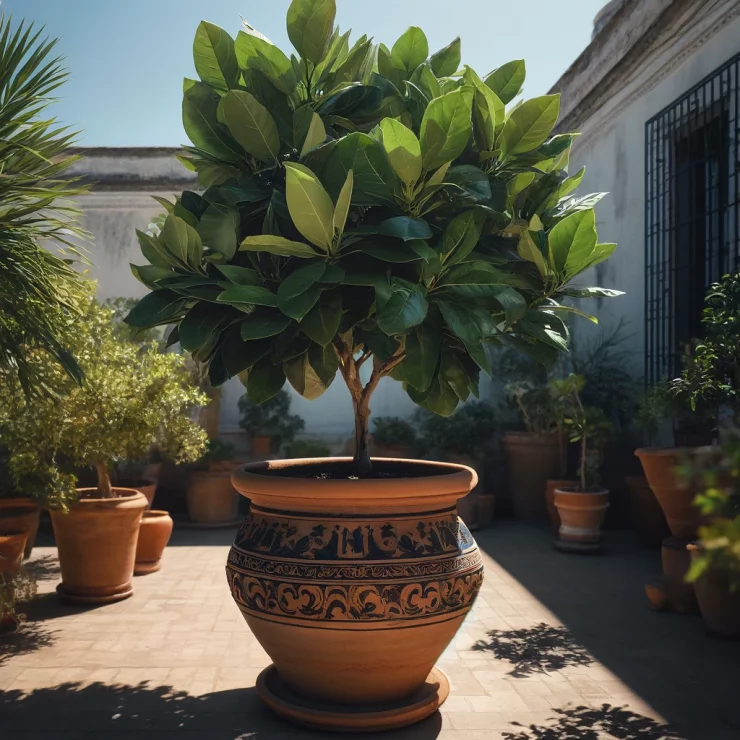
The bay leaf tree, scientifically known as Laurus nobilis, is a versatile and aromatic addition to any kitchen garden. Its glossy leaves not only add flavor to culinary dishes but also provide ornamental value. While commonly grown outdoors in Mediterranean climates, bay leaf trees can thrive in containers, making them accessible to a wider range of gardeners. In this article, we’ll delve into the process of growing a bay leaf tree in a container, from seed to spice.
Choosing the Container:
Selecting the right container is crucial for the successful growth of a bay leaf tree. Opt for a container that is at least 12 inches in diameter and has good drainage holes at the bottom to prevent waterlogging. Terra cotta or wooden containers are ideal as they allow for proper aeration and moisture regulation.
Soil and Planting:
Use a well-draining potting mix with a pH level between 6.0 and 7.0. A mix of equal parts of potting soil, perlite, and coarse sand works well. Fill the container about two-thirds full with the soil mix. Plant the bay leaf seedling in the center of the container at the same depth it was growing in its nursery pot. Gently firm the soil around the roots and water thoroughly.
Light and Temperature:
Bay leaf trees thrive in full sun to partial shade. Choose a location for your container where the tree will receive at least six hours of direct sunlight per day. Place it near a south-facing window or outdoors on a sunny patio. During the warmer months, the ideal temperature range for bay leaf trees is between 50°F and 85°F (10°C to 29°C). If grown indoors, ensure adequate air circulation to prevent humidity buildup.
Watering and Fertilizing:
Water the bay leaf tree consistently to keep the soil evenly moist but not waterlogged. Allow the top inch of soil to dry out between watering sessions. Fertilize the tree once a month during the growing season (spring and summer) with a balanced liquid fertilizer diluted to half strength. Avoid fertilizing during the dormant season (fall and winter).
Pruning and Maintenance:
Regular pruning is essential to maintain the shape and size of the bay leaf tree. Remove any dead, damaged, or diseased branches as soon as you notice them. Additionally, prune back any excessive growth to encourage bushiness and air circulation within the canopy. Repot the tree into a slightly larger container every two to three years to refresh the soil and provide ample root space.
Harvesting Bay Leaves:
You can start harvesting bay leaves once the tree reaches about two years of age and is mature enough to withstand pruning. Simply pluck individual leaves as needed for culinary use. Fresh bay leaves have a more potent flavor than dried ones, but both are suitable for cooking. To dry bay leaves, hang them in a warm, dry place with good airflow until they are crisp.
Growing a bay leaf tree in a container is a rewarding endeavor that allows you to enjoy the culinary and aesthetic benefits of this versatile plant even in limited spaces. With proper care and attention to its growing requirements, your container-grown bay leaf tree will provide you with an abundant supply of aromatic leaves to enhance your favorite dishes for years to come. So, roll up your sleeves, grab a container, and embark on the journey from seed to spice with your very own bay leaf tree.


